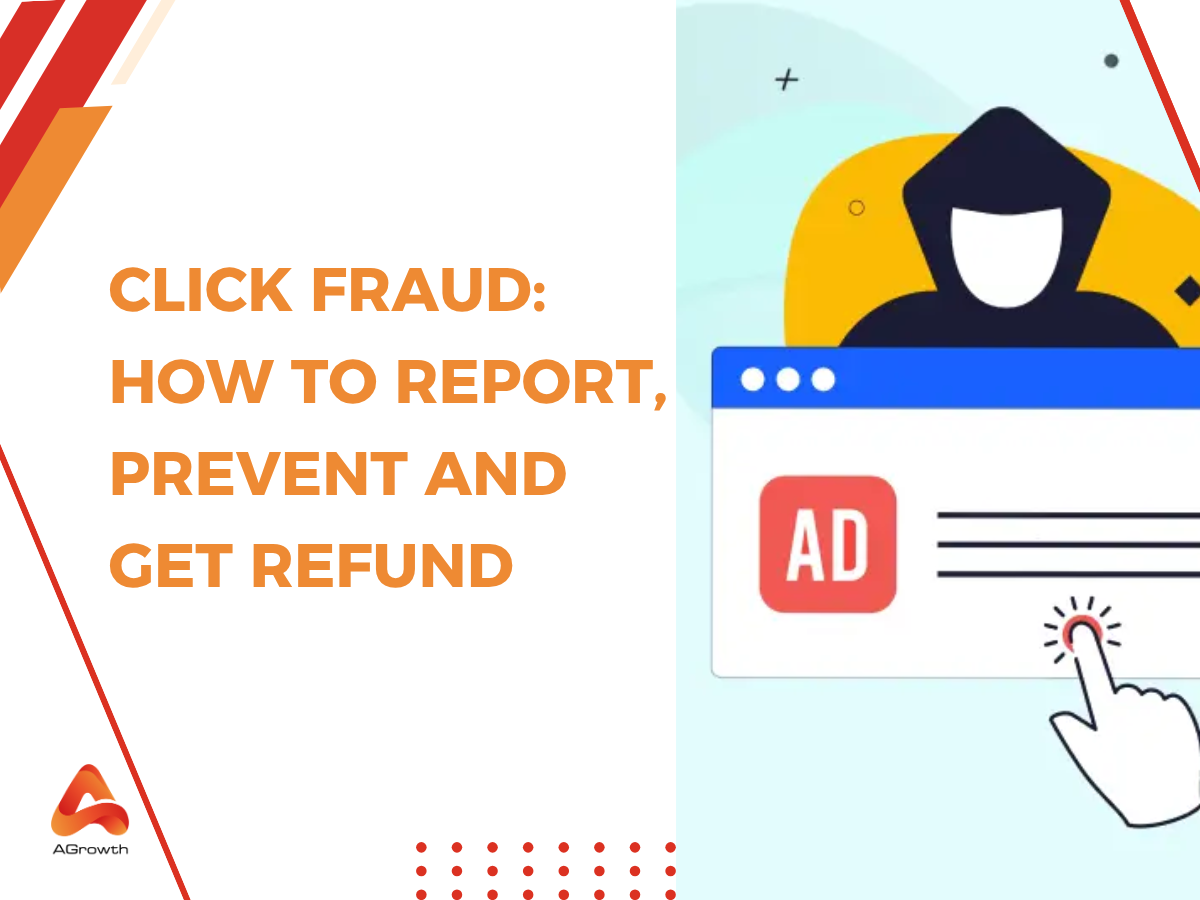
Table of Contents
What Is Google Ads Fraud? How to Detect and Prevent It Effectively
Click fraud is one of the biggest hidden threats in digital advertising today. fraudulent clicks can silently drain your budget and skew your performance data. Click fraud happens when bots, automated scripts, or even competitors repeatedly click on your ads without any real intent to purchase or engage. This not only wastes your advertising spend but also undermines the effectiveness of your campaigns by inflating key metrics like click-through rates and reducing your return on investment (ROI).
Fortunately, Google Ads offers tools to detect, report, and sometimes even refund fraudulent activity. However, preventing click fraud requires more than just relying on automated filters. In this guide, you’ll learn exactly how click fraud works, how it can affect your advertising strategies and budget, and most importantly, the actionable steps you can take to prevent, report, and recover your ad spend from fraudulent clicks.
What is click fraud?
Click fraud is a form of online advertising fraud where a person, bot, or automated script clicks on an ad without genuine interest in the advertised product or service. In pay-per-click (PPC) advertising, advertisers pay for each click; click fraud manipulates this system by generating false clicks to drain the advertiser’s budget or increase ad revenue for the publisher.
According to media entrepreneur and Journalist John Battelle, click fraud is a “decidedly black hat” tactic, often involving automated tools or low-paid workers repeatedly clicking ads to artificially inflate earnings. This practice benefits unscrupulous publishers while costing advertisers money for clicks that will never convert.
By imitating real user behavior, click fraud undermines ad performance, wastes marketing budgets, and raises ethical and legal concerns for advertisers relying on platforms like Google Ads.
Who commit click fraud
Click fraud is perpetrated by various actors, each with distinct motivations and methods.
1. Website Owners Seeking Revenue:
Some website owners engage in click fraud to artificially inflate their ad revenue. By clicking on ads displayed on their own sites or employing automated bots to do so, they generate illegitimate clicks that result in unwarranted earnings from advertisers. This practice exploits the pay-per-click (PPC) model, where advertisers pay for each click their ads receive.
2. Competitors Aiming to Drain Budgets:
Businesses may click on a rival's ads with the intent to exhaust their advertising budget. This tactic reduces the competitor's ad visibility and effectiveness, potentially diverting traffic and sales.
3. Click Farms and Low-Paid Workers:
Click farms employ individuals to manually click on ads or use automated systems to mimic genuine user interactions. Often located in regions with lower labor costs, these operations can generate vast numbers of fraudulent clicks, impacting advertisers' budgets and skewing analytics.
4. Cybercriminals and Botnets:
Sophisticated cybercriminals deploy botnets—networks of infected computers—to conduct large-scale click fraud. These bots simulate human behavior, making detection challenging, and can cause significant financial losses to advertisers.
What’s the Difference Between Invalid Clicks and Click Fraud?
Invalid clicks refer to ad interactions that don’t reflect genuine user interest. These can result from accidental clicks, duplicate clicks, or automated activity by bots and click farms. According to Google, invalid clicks include both unintentional actions and some fraudulent traffic and are often automatically filtered out so advertisers aren’t charged.
Click fraud, on the other hand, is a deliberate effort to generate fake clicks with malicious intent, whether to drain a competitor’s ad budget or to increase ad revenue for the site hosting the ad. Unlike accidental clicks, click fraud is intentional and harder for ad networks to detect, meaning advertisers may still be charged unless they actively monitor and report it.
While both involve non-genuine clicks, the key difference is intent: invalid clicks may happen accidentally or through system errors, while click fraud is a purposeful attempt to exploit the ad system.
How to detect click fraud
Detecting click fraud is critical for protecting your ad budget and campaign performance. You can identify fraudulent activity by analyzing unusual patterns in campaign metrics and user behavior.
- Monitor Conversion Rates
A sudden spike or drop in conversion rates may indicate click fraud. For example, if a campaign’s conversion rate jumps from 5% to 20% in a few days without a valid explanation, it could signal fake actions. Compare conversion rates across campaigns and against industry benchmarks to spot anomalies.
2. Analyze Bounce Rates
High bounce rates on paid traffic compared to organic traffic can be a red flag. If Google Ads reports 500 clicks but Google Analytics shows only 400 visits, bots might be exiting before the tracking code loads, suggesting click fraud. To check this:
-
Log in to Google Analytics (or your analytics platform).
-
Locate the landing page linked to the campaign.
-
Segment traffic by PPC and Organic users.
-
Compare the bounce rates between these two groups. Organic traffic typically has a lower bounce rate; a large gap may indicate fraudulent clicks.
-
Check the number of PPC visits in Google Analytics versus the clicks reported in Google Ads. For instance, if an ad promoting Jaipur handcrafted textiles reports 1,000 clicks in Google Ads but only 800 visits in Analytics, bots may be exiting before the tracking code loads—suggesting invalid clicks.
3. Check Click-Through Rates (CTR)
A sudden spike in click-through rate (CTR) may signal click fraud. While more fraudulent clicks often lead to a higher CTR, sometimes malicious activity masks itself within normal-looking numbers. To detect anomalies:
-
Monitor CTR trends over time: Are there unusual peaks on specific days?
-
Compare CTRs across similar campaigns: Is this campaign’s CTR significantly higher or lower than others targeting the same audience?
-
Check CTR against industry benchmarks: Large deviations from typical averages can be a red flag.
4. Review Quality Score's Expected CTR
Google Ads assigns an “Expected CTR” to each keyword. If a keyword shows an “Above Average” expected CTR while similar keywords are “Below Average,” it might be artificially inflated by fraudulent clicks.
5. Inspect Form Submissions and User Activity
A rise in fake form submissions, spam comments, or inactive user accounts aligning with PPC traffic spikes can be evidence of click fraud. Cross-reference submission timestamps with ad click times to detect overlaps.
6. Evaluate Smart Campaign Performance
Smart Campaigns are more vulnerable to click fraud, with studies showing up to 31% higher fraudulent activity than standard campaigns. If fraud is suspected, test performance by switching to standard campaigns.
7. Analyze IP Addresses
Check server logs for repeated clicks from the same IP addresses or subnets. For example, multiple clicks from an IP block belonging to a data center in Chennai outside your target region may indicate bot traffic. Once identified, block these IPs in your ad account (note: Google Ads allows blocking up to 500 IPs).
8. Audit Display Placements
Display campaigns are frequent targets for click fraud. Regularly review placement reports; remove sites with suspiciously high CTRs (e.g., over 3%) or unknown sources. Using a blocklist or an allowlist of trusted sites can reduce exposure.
For example, if your ads for Indian jewelry brands appear on unknown international sites or low-quality blogs with high CTRs, exclude those placements
.
What are the steps to report fraudulent clicks on Google Ads?
-
Gather Evidence: Collect documentation of suspicious activity, including unusual click patterns or IP addresses generating excessive clicks.
-
Access Reporting Section: Log into your Google Ads account and navigate to the issue reporting section.
-
Provide Detailed Descriptions: Offer comprehensive descriptions of the fraudulent activity to assist Google's investigation.
-
Monitor Communication: Check your email for responses from Google Ads support and provide any additional information requested.
-
Maintain Records: Keep a backup of all correspondence related to the incident for future reference.
How Does Click Fraud Operate Within Google Ads?
Click fraud in Google Ads involves deceptive practices where individuals or automated systems generate illegitimate clicks on ads, aiming to exhaust an advertiser's budget or inflate publisher revenues. This can be executed through various means, including bots, click farms, or malicious competitors.
Google employs sophisticated algorithms and manual reviews to detect and filter out such invalid activities. However, some fraudulent clicks may bypass these defenses, leading to skewed analytics and wasted ad spend.
How Does Click Fraud Affect Long-Term Advertising Strategies?
Persistent click fraud distorts key performance metrics, making it challenging for advertisers to assess campaign effectiveness accurately. Over time, this can lead to misguided strategic decisions, misallocation of budgets, and diminished return on investment (ROI).
Moreover, inflated engagement metrics may cause advertisers to continue investing in underperforming channels, further exacerbating financial losses and hindering business growth.
What Financial Impact Does Click Fraud Have on Advertising Budgets?
Click fraud poses a significant financial threat to advertisers. In 2023, businesses worldwide incurred losses amounting to $88 billion due to fraudulent ad activities, with projections indicating a rise to $172 billion by 2028.
These losses stem from paying for non-genuine clicks that yield no tangible business outcomes, thereby draining advertising budgets and reducing overall marketing efficiency.
What Is the Role of Billing Thresholds in Controlling Ad Spend?
Billing thresholds in Google Ads determine the spending limit at which an advertiser's account is charged. For instance, if the threshold is set at $500, the advertiser is billed each time their ad spend reaches this amount.
Understanding and managing these thresholds is crucial for budget control, as it allows advertisers to monitor expenditures and detect unusual spending patterns that may indicate click fraud.
How Can Automatic Payment Settings Be Used Wisely to Prevent Click Fraud?
Automatic payment settings streamline the billing process by charging advertisers once their spend hits a predefined threshold. To mitigate the risk of click fraud, advertisers should:
-
Regularly review billing statements for unexpected charges.
-
Set conservative daily budgets to limit potential losses.
-
Utilize Google's click fraud detection tools to monitor for suspicious activities.
By proactively managing payment settings, advertisers can better safeguard their budgets against fraudulent clicks.
How to Stop Google Ad Click Fraud
Combating click fraud requires a multifaceted approach:
1. Set Up IP Exclusions
If you identify suspicious IP addresses, such as repeated clicks from data centers in Hyderabad or unusual traffic from low-conversion regions, you can block these IPs in Google Ads to stop further fake clicks. Regularly reviewing server logs helps spot these patterns early.
2. Use Geo-Targeting Strategically
Click fraud is more prevalent in certain regions. Narrow your ad targeting to focus on trusted locations like Tier 1 Indian cities (Delhi, Bangalore, Mumbai) while excluding high-risk areas. However, keep in mind that fraudsters may use VPNs to mask locations, so this isn’t foolproof.
3. Monitor Campaign Metrics Regularly
Ongoing monitoring is critical. Check for irregularities such as high click-through rates (CTR) without conversions or sudden spikes in traffic from unexpected places like rural Uttar Pradesh or small towns in Odisha where your audience isn’t located. Use Google Analytics to set alerts for unusual activity in bounce rates, CTR, or traffic patterns.
4. Report Suspicious Activity to Google Ads
If you notice signs of click fraud, report them directly to Google Ads through their invalid traffic investigation process. Provide detailed logs, timestamps, and campaign data to support your claim. Google may issue credits for verified fraudulent clicks.
5. Run Remarketing Campaigns
Focus ads on users who have previously visited and engaged with your website. For example, a Kolkata-based online jewelry store might prioritize remarketing to past visitors, reducing exposure to new, unverified clicks that may be fraudulent.
6. Review Display Placements
If running Display Ads, audit placements regularly. Fraudsters often target ads appearing on obscure or low-quality sites. Remove placements with unusually high CTRs or irrelevant traffic sources.
By combining these strategies, advertisers can reduce the impact of click fraud, protect their ad spend, and focus campaigns on genuine potential customers. Staying vigilant is key to sustaining ROI, especially in competitive markets like India’s growing digital advertising landscape.
How Can Advertisers Identify Fake Google Ads?
Fake Google Ads often mimic legitimate advertisements but lead to malicious websites or phishing pages. To identify them:
-
Examine the URL for inconsistencies or misspellings.
-
Be wary of ads with overly enticing offers that seem too good to be true.
-
Use Google's Ad Transparency tools to verify the authenticity of the advertiser.
Staying vigilant can help prevent falling victim to fraudulent ads.
What Is the Process to Request a Refund for Fake Google Ads Charges?
If you discover a suspicious or unauthorized charge in your Google Ads account, it’s important to act quickly. Google allows advertisers to dispute such charges and request a refund by contacting Google Ads Support.
To submit a refund request, you’ll need to provide specific details:
-
The reason for disputing the charge
-
The date of the charge
-
The amount charged
-
The transaction ID
You can find this information in your account by:
-
Clicking the Billing icon in Google Ads.
-
Selecting Summary.
-
Opening the relevant month and locating the payment in question.
-
Noting the date, amount, and transaction ID.
-
Taking a screenshot of the charge as evidence.
What steps should be taken to cancel unauthorized charges?
-
Document Charges: Record unauthorized charges and gather supporting information.
-
Contact Support: Immediately report the charges to Google Ads support.
-
Provide Detailed Information: Offer a detailed account of the situation with supporting documents.
-
Verify Identity: Confirm your identity and payment methods as required by Google Ads.
-
Check Financial Statements: Review credit card statements for additional unauthorized transactions and report them to your financial institution.
How Can Advertisers Protect Their Credit Card Information?
Safeguarding credit card information is vital for preventing unauthorized charges:
-
Use Secure Networks: Avoid conducting transactions over public Wi-Fi
-
Enable Two-Factor Authentication: Add an extra layer of security to your accounts.
-
Regularly Monitor Statements: Review credit card statements for any unfamiliar charges.
-
Employ Trusted Payment Processors: Use reputable services that offer robust security measures .
Protect Your Google Ads Campaigns with Agrowth
Worried about click fraud draining your ad budget? Agrowth makes it easy to secure your Google Ads campaigns with advanced fraud detection and prevention tools—no complex setup required.
With Agrowth’s integrated platform, you can:
-
Monitor and block fraudulent clicks in real-time
-
Set custom rules to protect your ads automatically
-
Access clear reports to track suspicious activity and performance
-
Get expert support to handle refund claims smoothly
Stop wasting ad spend and start growing your business with confidence.
Frequently asked questions
What is click fraud, and how does it affect Indian businesses using Google Ads?
Click fraud involves illegitimate clicks on pay-per-click (PPC) ads, often by bots or competitors, aiming to deplete an advertiser's budget without genuine interest. In India, businesses in cities like Mumbai, Delhi, and Bengaluru have reported such activities, leading to increased advertising costs and skewed campaign analytics. This fraudulent activity can significantly impact return on investment (ROI) for Indian advertisers.
How can I detect click fraud in my Google Ads campaigns targeting Indian audiences?
To identify click fraud:
-
Monitor campaign metrics: Look for unusual spikes in click-through rates (CTR) without corresponding conversions.
-
Analyze geographic data: Watch for clicks originating from regions outside your target area, such as unexpected traffic from Tier-2 or Tier-3 cities.
-
Use analytics tools: Implement tools like Google Analytics to track user behavior and identify anomalies.
-
Employ third-party software: Consider using click fraud detection tools like ClickCease or ClickGUARD for real-time monitoring and protection.
Are there specific tools recommended for Indian businesses to combat click fraud?
Yes, several tools are effective:
-
ClickCease: Offers real-time monitoring and automatic IP blocking.
-
ClickGUARD: Provides detailed analytics and customizable protection settings.
-
PPC Protect: Utilizes machine learning to detect and prevent fraudulent clicks.
How long does it take to receive a refund from Google Ads for click fraud in the Indian market?
After submitting a refund request:
-
Processing time: Google typically processes refunds within 2 weeks.
-
Bank processing: It may take an additional 10 business days for the refund to reflect in your account, depending on your bank's procedures.
How can I detect click fraud in my Google Ads campaigns?
Detecting click fraud involves monitoring for unusual patterns such as sudden spikes in click-through rates (CTR) without corresponding conversions, repeated clicks from the same IP addresses, or high bounce rates. Utilizing tools like Google Analytics and third-party click fraud detection software can help identify and mitigate fraudulent activity.
What steps should I take to prevent click fraud on my ads?
To prevent click fraud, consider implementing IP exclusions for suspicious addresses, refining geo-targeting settings, setting up ad scheduling to avoid peak fraudulent activity times, and using click fraud protection tools that offer real-time monitoring and automatic blocking of invalid clicks.
How do I report suspected click fraud to Google Ads?
If you suspect click fraud, gather evidence such as logs of suspicious activity, IP addresses, and timestamps. Then, contact Google Ads Support through your account, providing the collected information. Google will investigate and, if they confirm invalid activity, may issue a refund for the affected charges.









Your comment